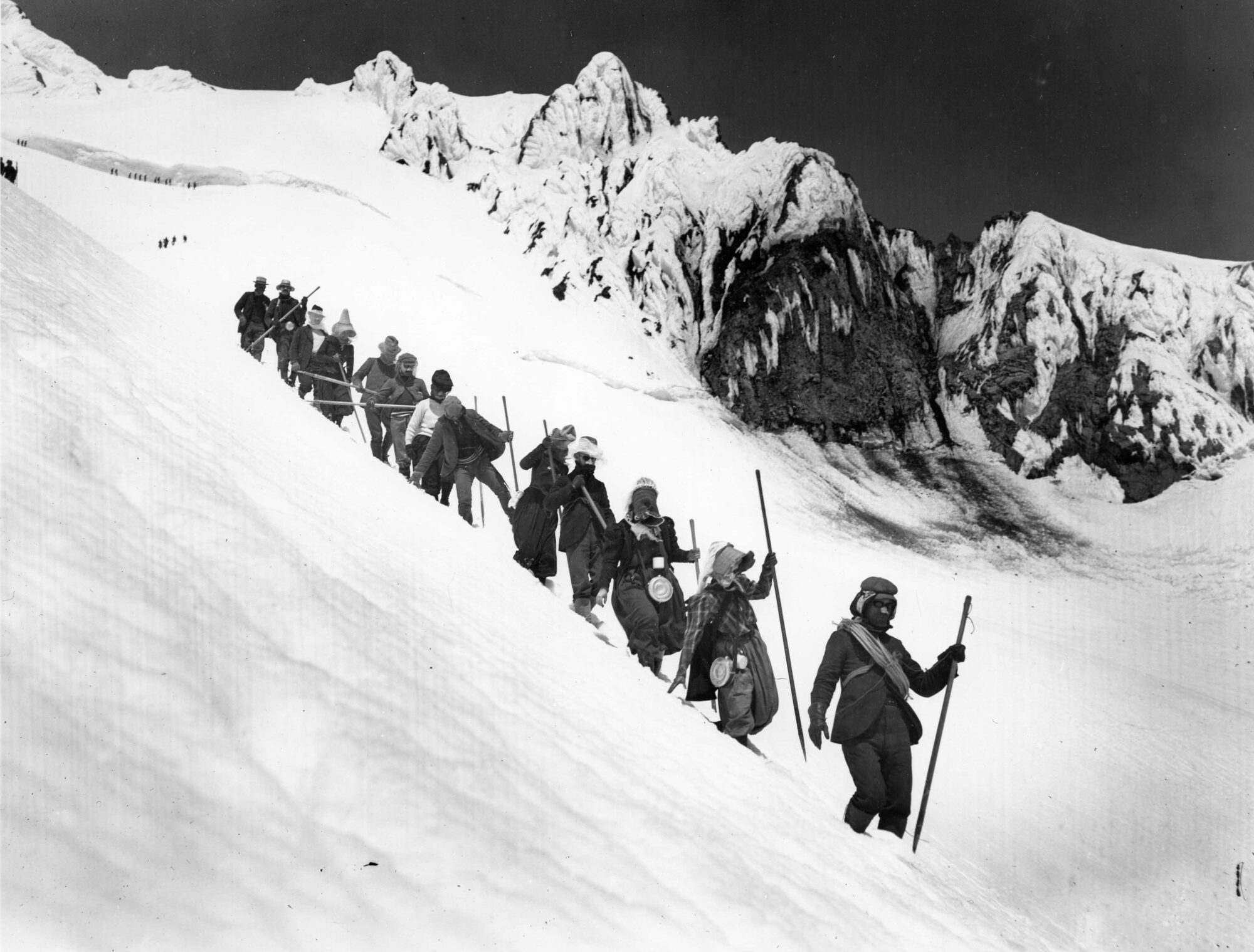
Joshua moved to the Pacific Northwest about 10 years ago, and in the past few years he’s done a lot of climbing with the Mazamas through our Basic Climbing Education Program (BCEP) and Intermediate Climbing School (ICS) programs. When not out in the wild, he works to create more equitable, prosperous and resilient communities.
Joshua also has been instrumental in creating the Queerzamas, an affinity group within the Mazamas for queer and/or trans folks and was part of our first-ever queer BCEP team.
Name: Joshua Baker
Pronouns: he, him, his
Year Joined Mazamas: 2022
Present-day outdoor activities: Mountaineering, rock climbing, hiking, backpacking
What’s your earliest outdoor memory? Growing up on a dairy farm in northern New York – cows out to pasture are an early outdoor memory. In terms of outdoor recreation, ice skating on a frozen pond at my grandparents farm with my sisters and cousins is an early memory I have.
How did you first hear about the Mazamas, and what prompted you to engage with the organization? I first learned about the Mazamas about a decade ago when I worked for the nonprofit, Focus the Nation. Each summer we held an annual climate focus retreat at the Lodge and went on Mazama-led hikes up to Elliot Glacier area. It wasn’t until I had a couple friends who did BCEP in 2019 that I decided I wanted to get involved in the Mazamas though.
As more people seek to recreate outdoors, what advice would you offer them? Find what brings your joy in the outdoor community.
What activities/situations/people most inspire you? Historically I’ve been a solitary creature – particularly when it comes to outdoor activities. More and more I have found inspiration, comfort, and enjoyment in the community building aspects of my outdoor pursuits. That’s why I’m particularly excited to be part of the new Queerzamas affinity space. Queerzamas will also be marching in the Pride Parade on July 16 – hope to see you there!
What is your favorite book/movie/TV show/social media account that you follow and why? For folx who’ve spent a good amount of time around me the past few years, they know I’m a bit obsessed with beavers and their importance to ecosystems in the West (and that they are adorable). A lot of my passion stems from reading Ben Goldfarb’s “Eager: The Surprising, Secret Life of Beavers and Why They Matter.”
What’s on your adventure bucket list? In addition to the mountains, I love the Oregon High Desert. I’m slowly chipping away at visiting, hiking, and volunteering on environmental stewardship trips to sites along the Oregon Desert Trail and across High Desert. I’m hoping to get out to the Owyhee Canyonlands for an adventure soon!












